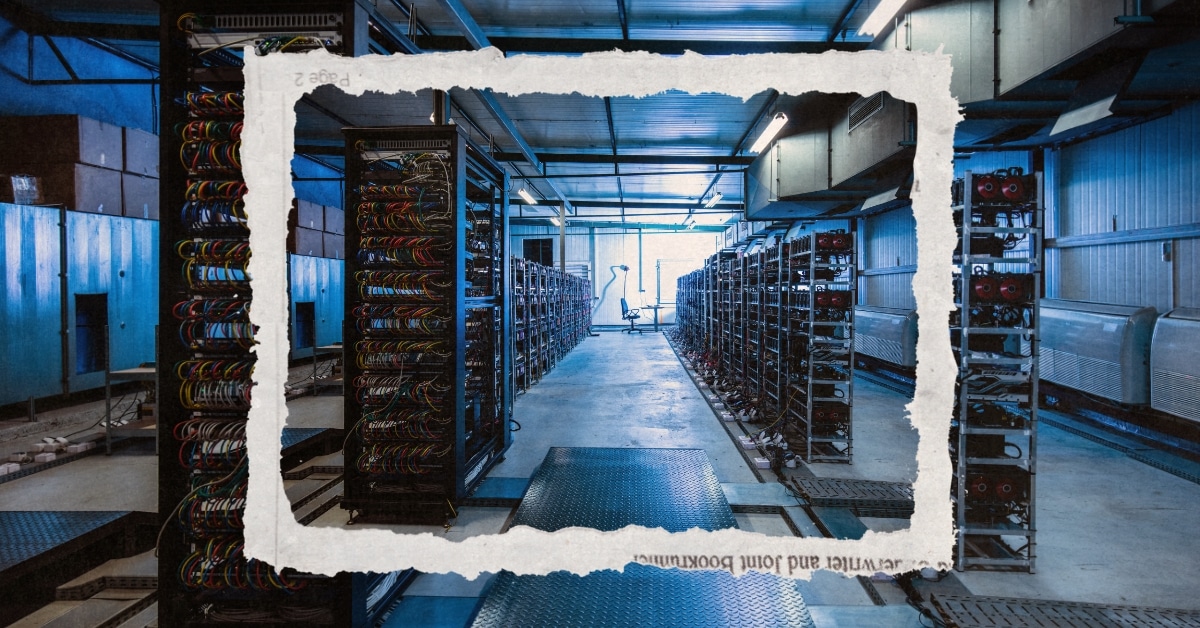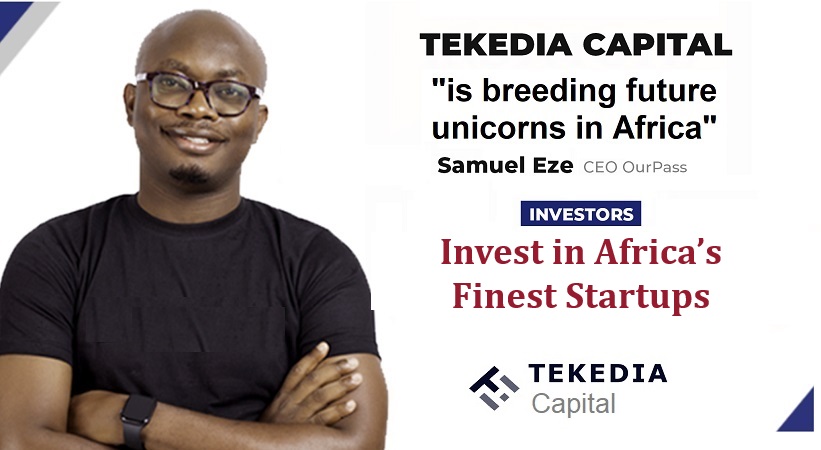News
Overview and examples in cryptocurrency

What is Cronos (CRO)?
Cronos (CRO) is the cryptocurrency token for a blockchain developed and operated by the cryptocurrency exchange Crypto.com. The Cronos network is designed to be a high-performance interoperable blockchain capable of supporting decentralized applications (dApps) and apps without central intermediaries, which tend to run on a variety of Ethereum-based blockchain spin-offs.
Key points
- Cronos is a blockchain with a native CRO token, designed as a nexus for decentralized finance (DeFi), non-fungible tokens (NFTs), and metaverse projects in the decentralized applications (dApps) ecosystem.
- Cronos’ interoperability can connect it to the Ethereum and Cosmos blockchains behind many dApps.
- Crypto.com offers a number of benefits for holding and using CRO, including lower trading fees, staking rewards, exclusive access to products and features, and more.
History of Cronos and CRO
Cronus is a open source blockchain and token launched in November 2021 by Crypto.com, one of the world’s largest cryptocurrency exchanges, to support a growing demand for dApps around the world decentralized finance (DeFi), non-fungible token (NFT)AND metaverse space. Since most of these dApps predominantly run on disparate derivatives of Ethereum, a blockchain was needed to connect them together and process the high volume of transactions that would result from such cross-integration.
Cronos stepped in to address Ethereum’s dApp and scalability limitations with interoperability frameworks and consensus engines that allow multiple blockchains to connect and exchange assets and data at significant loads without the need for intermediaries. Cronos is claimed to have the capacity to process over 10,000 transactions per second (TPS), which is significantly higher than Ethereum’s TPS, which averages around 13.
In addition to being able to connect multiple dApps at the same time, Cronos allows developers to create and host dApps from different blockchains. Cronos interoperability standards enable the network to function smart contracts from various Ethereum-like blockchains with little to no modifications. Smart contracts are self-executing programs that can be used to automate various actions on a blockchain and do things other than simply transferring a cryptocurrency.
Cronos vs. other popular blockchains
One of the most significant differences between Cronos and popular blockchains like Ethereum and Bitcoin is that it uses consensus and proof-of-authority (PoA) validation rather than proof-of-work or proof-of-stake.
Validators are chosen by invitation only, with developers occasionally opening windows to accept applications. Cronos PoA uses 24 handpicked validators to verify transactions and open new blocks, giving “authority” to the consensus mechanism because the chosen validators have been vetted and are trusted.
This is in stark contrast to other chains that use anonymous validator systems. Cronos is therefore a hybrid of public and private blockchains, a decentralized private blockchain open to the public for use.
Types of apps that use Cronos
- Decentralized Finance (DeFi): A DeFi application is a software application built on a blockchain network that allows users to access traditional financial services without relying on middlemen and intermediaries. Imagine a bank that works with code instead of people, where you directly interact with the system through your own digital wallet.
- Non-fungible tokens (NFTs): An NFT platform is an online marketplace where users can buy and sell NFTs. NFTs are investable digital certificates Property coined via computer code to represent a specific piece of digital resourcewhich can be anything from graphics, music, content and collectiblesTO virtual items in the game AND real world resources like the real estate sector. Unlike fungible tokens like cryptocurrencies, which are interchangeable and indistinguishable, each NFT is one of a kind.
- Metaverse platforms and apps: The metaverse is a convergence of multiple technologies and trends that aim to create a persistent, immersive, and interconnected virtual world using games, social media, virtual reality (VR), and augmented reality (AR). Think of it as a fusion of different aspects of the Internet.
Five billion CRO, a significant portion amounting to approximately 17% of the total CRO supply, has been allocated to Crypto.com and its affiliates, including the Crypto.com team, advisors and reserves for future development . Pre-assigned tokens can concentrate power and decision-making in the hands of a few and give insiders an advantage over public participants. For example, pre-mined tokens placed on the market can negatively depress the price of the tokens and discourage subsequent investors.
Role of the CRO token in Cronos
Just like the ether (ETH) token for the Ethereum blockchain, the CRO token plays a crucial role in the Cronos blockchain ecosystem as a native utility token that drives various aspects of its functionality. CRO is used transactions, episodeAND government, incentivizing users to maintain and participate in the network. The demand for CRO as a utility token fuels its liquidity and contributes to the stability of the Cronos ecosystem, creating a positive feedback loop.
CRO is the primary currency used to pay transaction fees on the Cronos network and facilitate seamless asset transfers between Cronos dApps without having to exchange multiple tokens. Each interaction with the Cronos blockchain requires users to spend a small amount of CRO to promote responsible use of the network and prevent spam.
CRO holders can participate in staking, where they lock their tokens to a whitelisted validator for a specified period to support the security, stability and decentralization of the network, deterring the blockchain from threats. In exchange, they earn rewards in the form of additional CRO tokens and voting rights for governance decisions on the future direction of the blockchain, including proposing upgrades, fee structures, and new integrations with other blockchains.
Cronos does not use a consensus mechanism like Bitcoin’s Proof-of-Work (PoW) model, which involves competitive cryptographic problem solving and network-level consensus to agree on the validity of transactions. Cronos’ Proof-of-Authority (PoA) consensus mechanism relies on staking validators who have already been entrusted with processing and reaching consensus on transactions and the state of its blockchain. It is also different from that of Ethereum Proof of Stake (PoS) model, who randomly chooses his staking validators.
Concerns for Cronos
Crypto.com, a cryptocurrency exchange, is the parent company of Cronos (CRO), which uses it in its blockchain operations. The company closed US institutional trading in June 2023, claiming there wasn’t enough interest from this group to justify keeping the platform open.
US retail investors can still trade on Crypto.com, but the liquidity typically provided by institutional traders in the US is not present on the platform. This can cause problems for investors who use it. For example, on April 14, 2024, the 24-hour trading volume was $35.2 million, much lower than that of many other cryptocurrencies.
Furthermore, as of April 12, 2024, there were only 8,554 active Cronos addresses, suggesting that only a limited number of people use the blockchain. Investors looking for trading opportunities or the ability to quickly enter and exit positions may want to consider other cryptocurrencies to ensure they don’t get caught in liquidity traps.
Is Cronos on Ethereum?
Cronos is based on Cosmos SDK, so it is not on Ethereum. However, it is a highly interoperable blockchain capable of communicating with Ethereum.
Does the CRO have a Blockchain?
Yes, CRO is the native token for the Cronos blockchain.
Is Cronos a Level 1 Blockchain?
In blockchain terms, “layer” refers to other chains that operate in tandem with a primary blockchain, completing tasks for that blockchain. Layer 1 is the term used to refer to primary blockchains, so Cronos is a layer 1 blockchain.
The bottom line
Cronos is a fast, interoperable blockchain, with its own native CRO token, that aims to be a user-friendly hub for DeFi, NFTs, and the metaverse within the broader dApp environment.
The comments, opinions and analyzes expressed on Investopedia are for informational purposes only. Read ours warranty and exclusion of liability for more information. As of the date this article was written, the author does/does not own cryptocurrency.
News
US Cryptocurrency Rules Delayed by ‘Never-Ending’ Lawsuits

Ripple CEO says cryptocurrency industry still seeking regulatory clarity from US
Speaking to Bloomberg News on Wednesday (July 17), Author: Brad Garlinghouse he said America is behind behind other countries which have already adopted cryptocurrency regulations.
“What we’re seeing, where it’s the UK, Japan, Singapore… even the European Union, more than two dozen countries have come together to provide a framework for cryptocurrency regulation,” Garlinghouse said.
“It’s frustrating that we as a country can’t get that regulatory framework in place. And instead, we have this never-ending lawsuit coming from the SEC that doesn’t really address the problem.”
Ripple has been the target of some of these legal disputes. Securities and Exchange Commission (SEC) sued the company in 2020, accusing it of conducting a $1.3 billion operation offering of unregistered securities tied to its XRP token.
However, last year a judge ruled that only Ripple’s institutional sales of XRP, not retail sales, violated the law, a decision widely seen as a victory for the cryptocurrency industry.
As PYMNTS noted at the time, that ruling has “far-reaching repercussions impact across the digital asset ecosystem, which has long maintained that its tokens do not represent securities contracts.”
However, Garlinghouse told Bloomberg on Wednesday that the company cannot wage multimillion-dollar legal battles over each token.
He spoke to the news agency from the Republican National Convention in Milwaukee, where the party is backing the candidacies of former President Donald Trump and Ohio Sen. J.D. Vance, both of whom are considered pro-cryptocurrency.
But Garlinghouse argued that cryptocurrencies “should not be a partisan issue,” and noted that he had recently attended a conference in Washington that included Democrats, including White House officials.
“I think they were there, listening to the industry… it was refreshing to start having that conversation,” she said.
President Joe Biden earlier this year he vetoed a measure which would have ended the SEC’s special rules for crypto-asset custodians. This legislation was supported by both the digital asset industry and the banking industry.
Ripple early this year donated $25 million to the cryptocurrency industry’s super PAC Fair Smoothiewith Garlinghouse stating at the time that such donations would continue every year, as long as the industry had its detractors.
Second Open SecretsWhich monitor spending For campaigns, the PAC has spent $13.4 million this year, much of it to help defeat Rep. Katie Porter’s (D-Calif.) U.S. Senate campaign.
News
The Future of Cybersecurity in the Cryptocurrency Industry

The cryptocurrency space has had a tumultuous journey, with its fair share of ups and downs. As we look to the future, one area that remains a constant focus is cybersecurity. The digital nature of cryptocurrencies makes them inherently vulnerable to cyber threats, and as the industry evolves, so does the landscape of potential risks.
In 2022, the cryptocurrency market faced significant challenges, with over $2 trillion in market value lost. This event served as a wake-up call for the industry, highlighting the need for robust cybersecurity measures. The future of cryptocurrency security is expected to see a shift towards more regulated and established institutions taking the reins of crypto technology and blockchain infrastructure.
The decentralized nature of cryptocurrencies offers numerous benefits, such as transparency and financial inclusion. However, it also introduces unique security challenges. The risk landscape is filled with threats such as hacking, phishing, ransomware attacks, malware, and social engineering. These threats not only lead to financial losses, but also damage the reputation and trust within the cryptocurrency ecosystem.
Mini-MBA Tekedia edition 15 ((September 9 – December 7, 2024) started recordings; Register today for discounts reserved for early bird customers.
Tekedia AI in Business Masterclass Opens registrations Here.
Join the Tekedia Capital Syndicate and IInvest in Africa’s best startups Here.
The decentralized nature of cryptocurrencies offers many benefits, but it also presents unique security challenges. Cyber risks such as hacking, phishing, and ransomware pose threats to the integrity of digital assets. The infrastructure that supports cryptocurrencies is not immune to vulnerabilities, including smart contract flaws and exchange hacks.
To address these vulnerabilities, the infrastructure that supports cryptocurrencies must be strengthened. Smart contract vulnerabilities, exchange hacks, wallet breaches, and flaws in the underlying blockchain technology are significant concerns that must be addressed to ensure the security and integrity of digital assets.
As cybercriminal tactics and techniques become more sophisticated, the cryptocurrency industry must stay ahead of the curve. The future will likely see more targeted attacks, exploiting weaknesses in infrastructure, networks, and human factors. This requires a proactive and multifaceted approach to cybersecurity.
To mitigate these risks, several measures must be adopted:
Strengthening security measures: Developers, exchanges, and wallet providers must improve security protocols, use strong encryption, implement multi-factor authentication, and conduct regular security audits.
Education and awareness: Users should be educated on best practices for protecting their digital assets, including using strong passwords, recognizing phishing attempts, and using hardware wallets for secure storage.
Looking ahead, the cryptocurrency industry is expected to see an increased focus on robust security measures. Blockchain projects and exchanges are likely to invest in advanced encryption techniques and decentralized storage solutions to protect user assets. The future impact of cyber risk on cryptocurrencies will depend on the collective efforts of stakeholders to address vulnerabilities and strengthen security measures.
Collective efforts by stakeholders in the cryptocurrency space are crucial to address vulnerabilities and strengthen security measures. While challenges persist, advances in cybersecurity technologies and practices offer hope for a more secure and resilient cryptocurrency ecosystem.
The future of cybersecurity in the cryptocurrency industry depends on finding a balance between innovation and regulation. It requires a collaborative effort from all parties involved, from developers to end users, to create a secure environment that fosters trust and growth in the industry. As we move forward, it is critical that lessons learned from past events guide the development of stronger security measures, ensuring the longevity and stability of cryptocurrencies as a vital part of the modern economic toolkit.
Like this:
Like Loading…
News
Bullish XRP and RLBK price predictions rise, outpacing the broader cryptocurrency market, prompting Shiba Inu holders to switch!

Bitcoin’s one-week surge from $60,000 has pushed other cryptocurrencies into an uptrend. However, for many altcoins, this trend has been temporary. Altcoins such as XRP and Shiba Inu (SHIB) have experienced price drops. However, Rollblock, a new altcoin on the Ethereum blockchain, has thrived during this period, attracting thousands of investors looking for long-term growth.
XRP’s Nearly 30% Growth Over Last Week Drops as Selling Pressure Increases
XRP is seeing further price decline as Ripple investors withdraw their profits from the token. The surge in XRP’s price to $0.64 in the past week has provided investors with a perfect opportunity to increase their returns in the short term. With the ongoing sell-off in XRP, XRP has jumped over 8% in the past day and is now trading at $0.59. However, analysts tracking XRP indicators predict that XRP could still extend its gains by over 30% in the coming weeks.
Shiba Inu (SHIB) marks its third consecutive day of losses
Shiba Inu (SHIB) is in a period of adjustment after a week of strong gains. In the last 24 hours, SHIB has seen a jump of over 7%, reflecting a natural market fluctuation. Analysts are observing a death cross on the Shiba Inu chart, which historically signals the potential for future opportunities as the market stabilizes. As investors explore new possibilities, some are diversifying into promising altcoins like Rollblock (RBLK) to strategically rebalance their portfolios and capitalize on the emerging trend.
Rollblock (RBLK) Up Another 7% as New Investors Join Pre-Sale
Rollblock (RBLK) has taken the cryptocurrency market by storm, having attracted investors from more popular altcoins like Shiba Inu (SHIB) and XRP. Rollblock’s growth is attributed to its utility in the $450 billion global gaming industry.
Rollblock aims to use blockchain technology to bridge the gap between centralized and decentralized gambling. With blockchain technology, Rollblock secures every transaction in its online casino, providing transparency and convenience to millions of players who are uncomfortable placing bets on other iGaming platforms.
This innovative use of blockchain technology in the industry has grown Rollblock to over 4,000 new users in less than two months. With plans to add sports betting, this number is expected to grow exponentially in Q3.
Rollblock uses a revenue sharing model that splits up to 30% of its casino’s weekly profits with token holders. This happens after Rollblock buys back $RBLK from the open market and uses half of it for rewards. The other half is burned to increase the price of $RBLK.
Rollblock price has seen four increases in the past month with $RBLK tokens now selling for $0.017. Analysts predict that at the current growth rate, Rollblock could increase by over 800% before the presale ends. For investors looking for a long-term token with growth potential, phase four is the best time to buy Rollblock before its price skyrockets!
Discover the exciting Rollblock (RBLK) pre-sale opportunities now!
Website:https://Rollblockpresale.io/
Social: https://linktr.ee/Rollblockcasino
No spam, no lies, just insights. You can unsubscribe at any time.
News
Texas Crypto Miners Turn to AI as Crypto Declines

As cryptocurrency mining becomes less profitable, Texas cryptocurrency mining companies are switching to supporting artificial intelligence companies.
Bitcoin miners, with their sprawling data centers and access to significant energy resources, are ideally suited for computationally intensive AI operations, and as cryptocurrency mining becomes less profitable, companies see this shift as a logical answer to their problems.
On Thursday, Houston-based Lancium and Denver-based Crusoe Energy Systems announced a multibillion-dollar deal to build a 200-megawatt data center near the West Texas city of Abilene to support advanced artificial intelligence applications such as medical research and aircraft design, CNBC reported. The plant represents the first phase of a larger 1.2 gigawatt project.
Lancium and Crusoe’s move into AI mirrors a broader trend among bitcoin miners. The combined market capitalization of the top U.S.-listed bitcoin miners hit a record $22.8 billion in June. Companies like Bit Digital and Hut 8 are diversifying into AI, with Bit Digital securing a $92 million annual revenue deal to supply Nvidia GPUs and Hut 8 raising $150 million to expand its AI data center.
But the growing popularity of these operations also presents challenges, particularly for the Texas power grid. Last month, the Electric Reliability Council of Texas announced that the state is expected to nearly double its energy production by 2030 to meet the high energy demands of data centers and cryptocurrency operations.
Lieutenant Governor Dan Patrick expressed concern about the projections.
“Cryptocurrency miners and data centers will account for more than 50% of the additional growth. We need to take a close look at these two sectors,” He wrote on Twitter/X. “They produce very few jobs compared to the incredible demands they place on our network. Cryptocurrency miners could actually make more money selling electricity to the network than they do from their cryptocurrency mining operations.”
Analysts predict significant growth in data center power capacity, which is expected to account for up to 9% of U.S. electricity consumption by 2030.
The operations also pose challenges for nearby cities. Earlier this month, TIME reported that a crypto-mining facility was seriously compromising the health of residents in the city of Granbury. TIME reported more than 40 people with serious health problems, including cardiovascular disease, high blood pressure and hearing loss. At least 10 of the residents needed to go to the emergency room or an urgent care facility.
The disturbances were caused by the extreme noise generated by the crypto-mining facility’s fans, which are used to keep the machines cool. While the proposed data center in Abilene would use liquid cooling systems, it’s still unclear whether the facility’s operations would pose a health risk to local residents.
-

 Nfts1 year ago
Nfts1 year agoShardLab Launches ZK-Based Tool for Digital Identity and NFT Vouchers
-

 News1 year ago
News1 year agoWallet recovery firms are abuzz as stranded cryptocurrency investors panic in the bitcoin boom
-

 Bitcoin1 year ago
Bitcoin1 year agoBitcoin, Ethereum, Solana and Cryptocurrency Markets Look Ready to ‘Send’ as Stars Align, According to Investor Chris Burniske
-

 Altcoins1 year ago
Altcoins1 year agoThree Altcoins Poised for Significant Growth in 2024: ETFS, OP, BLAST
-

 Altcoins1 year ago
Altcoins1 year agoAccumulate these altcoins now for maximum gains
-

 Nfts1 year ago
Nfts1 year agoOG Crypto Artist Trevor Jones Unveils Groundbreaking Collection of Ordinals | NFT CULTURE | NFT News | Web3 Culture
-

 Bitcoin1 year ago
Bitcoin1 year agoBillionaires are selling Nvidia stock and buying an index fund that could rise as much as 5,655%, according to some Wall Street analysts
-

 Videos9 months ago
Videos9 months agoKamala just won the boner! [Bad For Crypto]
-

 Videos1 year ago
Videos1 year agoLIVE FOMC 🚨 Could be CATASTROPHIC for Altcoins!
-

 News1 year ago
News1 year agoA Guide for Newcomers & Beginners – Forbes Advisor
-

 Videos1 year ago
Videos1 year agoAttention: a historically significant BITCOIN signal has just appeared!
-

 Videos1 year ago
Videos1 year agoSTOCK MARKET FUD! ⚠️ [Why This Is GREAT For Bitcoin Traders!]







